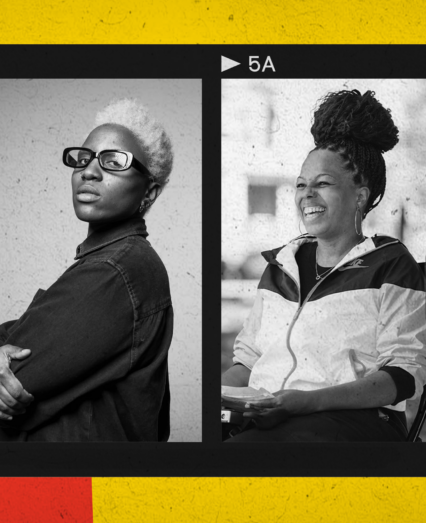“It was all a dream!”
The Notorious B.I.G.
This is a line embedded in the very fabric of hip-hop. Christopher Wallace, better known as The Notorious B.I.G., is considered one of the greatest hip-hop artists ever to put pen to pad. “It was all a dream” is the metaphor for his road to success. Coincidentally, this line is suitable to describe the rise of the genre itself—from its inception in the late ’70s to its place today as a genre known globally, the journey can only be described as a dream come true.
In this now 50-year span, there have been some unlikely partnerships. One of those is Sprite, a product of Coca-Cola. Sprite and hip-hop may seem like an odd marriage, but if you explore their origins, you’ll find a few similarities.
According to Rock Hill Coca-Cola Bottling Company, Sprite was originally developed in West Germany in 1959. Two years later, it was introduced to the American market. Even though hip-hop was born in New York, its creation lies within communities where individuals may describe their realities as separate from what is considered American. Martin Luther King, Jr. termed living this separate reality as the Other America.
In addition to not being created for the “typical” American, both were accepted and welcomed by the youth. These two commonalities, however, don’t offer a full explanation for why Sprite is regarded as the unofficial drink of hip-hop today. That marketing position was achieved by taking a risk.
Picture this: The year is 1986, the president is Ronald Reagan, and Adidas jumpsuits with gold chains are all the rage. There is a new style of music captivating the youth, but it has yet to be stamped by a national sponsorship. It’s raw, not quite disco, the instrumentals are harder and punchy, and the artists call whatever they do MCing. The term MC, (“Microphone Controller” or “Mic Checka”) sounds rhythmic and lyrical. During this time, Sprite was losing its charm among the youth, which may have led to the brand recognizing the growing popularity of this new sound.
Awareness of trends alone doesn’t always yield anything, so Sprite decided to take a risk that no other major company had at the time: They included hip-hop in their marketing strategy and launched one of the first national TV ads featuring a hip-hop artist. The commercial featured the rapper (MC) Kurtis Blow as a rapping anchorman.
The lyrics were:
This is Kurtis Blow with the latest trends
You got to know what’s out, and what’s inI’m talking ’bout the taste, the one that’s right
(Now more than ever) it’s SpriteLemon taste, and lime taste, straight limon taste is tough
Without limon it’s not happiness, so sorry 7UPNa-na-now that’s the trend, so tell it to a friend
We’re chilling out with the taste that’s in
Now more than ever
(Now more than ever) it’s Sprite
Fast forward a few years to the 1990s, and we begin to see more artists featured in Sprite’s marketing efforts, including campaigns such as “I Like the Sprite in You” and “Obey Your Thirst.”
This time, more than one artist is featured in these campaigns. With “I Like the Sprite in You,” you can find commercials with Kid n Play and Kris Kross. “Obey Your Thirst” is an entirely hip-hop-focused effort, spotlighting hip-hop icons like A Tribe Called Quest, KRS-One, Grand Puba, Pete Rock & CL Smooth, Grandmaster Flash, and Afrika Bambaataa, just to name a few.
This trend continued with Sprite partnering with hip-hop artists in the early 2000s through the present day, and the genre’s diversification with mainstream artists versus underground artists was reflected in Sprite’s marketing. “Thirst for Yours” and “Sprite Way” were efforts to help promote unsigned artists gain recognition. “Obey Your Verse” was a lyrical collection of soda cans that displayed song lyrics from major artists. Hip-hop superstars like Drake, J.Cole, The Notorious B.I.G., Missy Elliot, and more each had their rhymes printed on Sprite cans.
If you are wondering why this marriage worked, it’s because Sprite genuinely embraced hip-hop and the surrounding culture. Their tactics were (and still are) an amplification of voices in hip-hop. Yes, Sprite benefited by staying relevant with the youth—according to Adweek, during the ’90s, Sprite was the carbonated beverage category’s fastest-growing brand for five years, commanded a 58 percent market share by 1999, and started to develop NBA sponsorship opportunities.
However, hip-hop was also able to grow and mature through the exposure, like having a national TV commercial in its earlier years. It’s safe to say this is a mutually beneficial relationship that’s still going strong today.
I’ll leave you with these lyrics from J.Cole: “You gotta dream like you never seen obstacles.”
You can find them on can 14 of 16 from the J.Cole “Obey Your Verse” Sprite can.


